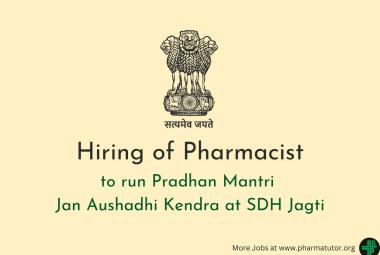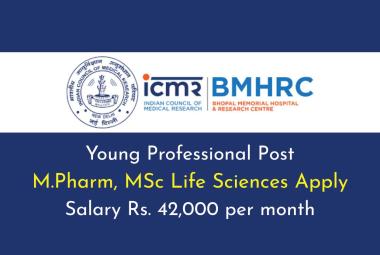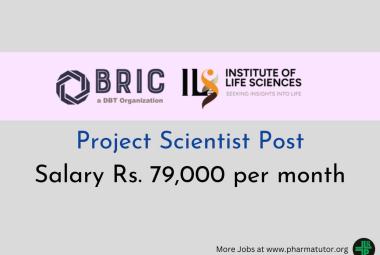{ DOWNLOAD AS PDF }
ABOUT AUTHORS
Chetan A. Prajapati, Bhavik S. Patel
Department of Quality Assurance, Shri Sarvajanik Pharmacy College
Nr. Arvind Baug, Mehsana, Gujarat, India
prajapatichetan25@gmail.com
ABSTRACT
A simple, accurate and precise spectrophotometric method has been developed for simultaneous estimation of Sildenafil Citrate and Dapoxetine Hydrochloride in combined dosage form. Simultaneous equation method is employed for simultaneous determination of Sildenafil Citrate and Dapoxetine Hydrochloride from combined dosage forms. In this method, the absorbance was measured at 291 nm for Sildenafil Citrate and 230nm for Dapoxetine Hydrochloride. Linearity was observed in range of 6-42μg/ml and 2-10μg/ml for Sildenafil Citrate and Dapoxetine Hydrochloride respectively. Recovery studies confirmed the accuracy of proposed method and results were validated as per ICH guidelines. The method can be used for routine quality control of pharmaceutical formulation containing Sildenafil Citrate and Dapoxetine Hydrochloride.
REFERENCE ID: PHARMATUTOR-ART-2271
INTRODUCTION
Sildenafil Citrate (SIL; 1-[[3-(6, 7-dihydro-1-methyl-7-oxo-3-propyl-1Hpyrazolo [4, 3-d]pyrimidin-5-yl)-4-ethoxyphenyl]sulfonyl]-4-methylpiperazine citrate[Figure 1] is phosphodiesterase type 5 (PDE5) inhibitor and used in Sexual Dysfunction[1-3]. Dapoxetine Hydrochloride (DPX; (+)(S)-N,N-dimethyl-α-[2-(1-naphthalenyloxy)ethyl]-benzenemethanamine hydrochloride [Figure 2] is Serotonin Reuptake Inhibitor and used in premature ejaculation, epilepsy [4]. The combination of these drugs (100 mg SIL and 60 mg DPX) has been recently approved for the treatment of Sexual Dysfunction and premature ejaculation.
The literature reveals that several spectrometric and HPLC methods available for individual Sildenafil Citrate[5-8]. A number of HPLC method are reported for DPX determination of DPX[9]. no method has been reported for simultaneous estimation by U.V Spectrophotometric method in their combined tablet formulation.
MATERIALS AND METHODS
Apparatus
A shimadzu model 1700(Japan) double beam UV/Visible spectrophotometer with spectral width of 2 nm, wavelength accuracy of 0.5 nm and a pair of 10 mm matched quartz cell was used to measure absorbance of all the solutions. Spectra were automatically obtained by UV-Probe system software (UV Probe version 2.31). An Electronic analytical balance (Acculab) and an ultrasonic bath were used in the study.
Reagents and Materials
Reference standard of SIL and DPX were obtained from Emcure Pharma. (Pune, India) as a gift sample, whereas their formulation obtained from local market. Analytical grade Methanol obtained from Finar Chemicals (Mumbai, India).
Preparation of standard stock solution
An accurately weighed quantity of SIL (50 mg) and DPX (50 mg) were transferred to a separate 0 ml volumetric flask and dissolved and diluted to the mark with methanol. Take 10 ml of above solution into 100 ml volumetric flask and dilute the mark with distill water to obtain standard solution having concentration of SIL (100 μg/ml) and DPX (100 μg/ml). This solution was used as working standard solution.
Method
In simultaneous equation method, six working standard solutions having concentration 6, 10, 14, 18, 22, 26, 30, 34, 38, 42 μg/ml for SIL and 2, 3, 4, 5, 6, 7, 8, 9, 10 μg/ml for DPX were prepared in Methanol and measured the absorbance at 291 nm (λmax of SIL) and 230nm (λmax of DPX), calculate absorptivity coefficients were calculated using calibration curve.
The concentration of two drugs in the mixture can be calculated using following equations
A2ay1- A1ay2
Cx= ______________ ………… (1)
ax2ay1 - ax1ay2
A1ax2- A2ax1
Cx= ______________ ………… (2)
ax2ay1 - ax1ay2
Where A1, A2 are absorbance of mixture at 291 nm (λ1) and 230nm (λ2) respectively, ax1 and ax2 are absorptivities of SIL at λ1 and λ2 respectively, ay1 and ay2 are absorptivities of DPX at λ1 and λ2 respectively, Cx and Cy are concentrations of SIL and DPX respectively.
METHOD VALIDATION[10]
Linearity
The calibration curves were plotted over a concentration range of 6-42 μg/ml for SIL and 2-10 μg/ml DPX. Accurately measured standard stock solutions of each SIL (0.6ml, 1.0ml, 1.4ml, 1.8ml, 2.2ml, 2.6ml, 3.0ml, 3.4ml, 3.8ml, and 4.2ml) and DPX (0.2ml, 0.3ml, 0.4ml, 0.5ml, 0.6ml, 0.7ml, 0.8ml, 0.9ml, 1ml) were transferred to a series of 10 ml volumetric flask separately and diluted up to the mark with methanol. The absorbance of solution was then measured at 291 nm and 230nm. The calibration curves were constructed by plotting absorbance versus concentration and the regression equations were calculated.
Precision
Intraday Precision
Mixed solutions containing 6-42 µg/ml SIL and 2-10 µg/ml DPX was analyzed 3 times on the same day and % RSD was calculated.
Interday Precision
Mixed solutions containing 24-64 µg/ml SIL and 6-16 µg/ml DPX was analyzed on 3 different day and % RSD was calculated.
Accuracy
The accuracy of the method was determined by calculating recoveries of SIL and DPX in mixture by the standard addition method. Known amount of standard solutions of SIL (0, 2, 4 and 6 µg/mL) and DPX (0, 1.2, 2.4 and 3.6 µg/mL) were added to a pre-quantified sample solution of 10 µg/mL SIL + 6 µg/mL DPX mixture. The absorbance of SIL and DPX were recorded at λ1 and λ2. The percentage recovery was calculated by measuring the absorbance of both drug at their absorbance maxima and fitting these values into simultaneous equation. Each response was average of three determinations.
Limit of detection and Limit of quantitation
The limit of detection (LOD) and the limit of quantitation (LOQ) of the drug were derived by calculating the signal-to-noise ratio (S/N, i.e., 3.3 for LOD and 10 for LOQ) using the following equations designated by International Conference on Harmonization (ICH) guidelines.
LOD = 3.3 × σ/S
LOQ = 10 × σ/S
Where, σ = the standard deviation of the response and S = slope of the calibration curve.
Analysis of tablet dosage form
Take 10 tablets and weighed. Find out average weight. Take tablet powder equivalent to 50 mg of SIL and 30 mg of DPX was transferred in 100 ml volumetric flask, dissolved and diluted up to mark with methanol. The solution was sonicated for 15minutes. Filter the solution through Whatman filter paper no.42 and discard first few drops of filtrate. Pipette out 0.2 ml of the above solution in 10ml volumetric flask and diluted to mark with methanol. Absorbance of the resulting solution was measured at 291.0 nm and 230.0 nm against methanol, relative concentration of two drugs in the sample was calculated using above equation (1) and (2).
RESULT AND DISCUSSION
In simultaneous equation method, the primary requirement for developing a method for analysis is that the entire spectra should follow the Beer’s law at all the wavelength, which was fulfilled in case of both these drugs. The two wavelengths were used for the analysis of the drugs were 291 nm (λmax of SIL) and 230nm (λmax of DPX) at which the calibration curves were prepared for both the drugs. The overlain UV absorption spectra of SIL (291 nm) and DPX (230nm) in methanol is shown in [Figure 3]. The validation parameters were studied at all the wavelengths for the proposed method. Accuracy was determined by calculating the recovery and the mean was determined [Table 2]. The method was successfully used to determine the amounts of SIL and DPX present in the tablet dosage forms. The results obtained were in good agreement with the corresponding labeled amount [Table 3]. Precision was calculated as repeatability and intra and inter day variations (% RSD) for both the drugs.
CONCLUSION
The developed simultaneous equation method is found to be simple, sensitive, accurate and precise and can be used for routine analysis of SIL and DPX. The developed method was validated as per ICH guidelines. Statistical analysis proved that the method is repeatable and selective for the analysis of SIL and DPX in their combined pharmaceutical formulations.
Table 1: Regression Analysis Data and Summary of Validation Parameters for the Proposed Method
|
Sr. No |
Parameters |
SIL |
DPX |
|
1 |
Wavelength range (nm) |
291 |
230 |
|
2 |
Beer’s law limit (μg/ml) |
6-42 |
2-10 |
|
3 |
Regression equation (y = mx + c) |
y = 0.0196x + 0.0137 |
y = 0.089x + 0.022 |
|
4 |
Slope |
0.0196 |
0.089 |
|
5 |
Intercept |
0.0137 |
0.022 |
|
6 |
Correlation Coefficient (r2) |
0.9993 |
0.9995 |
|
7 |
System Precision (%R.S.D)a 1.Intraday Precision(n = 3) 2.Interday Precision(n = 3) |
0.53-0.89% 0.87-1.23% |
0.47-0.71% 1.20-1.59% |
|
8 |
Accuracy (% recovery) (n = 3) |
98.98-100.49% |
99.11-100.44% |
|
9 |
LODb(μg/ml) |
0.70 |
0.28 |
|
10 |
LOQc (μg/ml) |
1.12 |
0.54 |
|
11 |
Assay (±S.D.)d (n = 3) |
99.6 ± 0.84 |
100.3 ± 0.78 |
aRSD = Relative standard deviation. bLOD = Limit of detection. cLOQ = Limit of quantitation
dSD is Standard deviation and n is number of replicates
Table 2: Recovery Data of Proposed Method
|
Drug |
Level |
Amount taken (μg/ml) |
Amount added (μg/ml) |
Amount added (%) |
% Mean recovery (±S.D)(n = 3) |
|
SIL |
I |
10 |
0 |
0 |
99.50 ± 1.7 |
|
II |
10 |
2 |
20 |
100.49 ± 1.74 |
|
|
III |
10 |
4 |
40 |
98.98 ± 1.18 |
|
|
IV |
10 |
6 |
60 |
100.35 ± 1.36 |
|
|
DPX |
I |
6 |
0 |
0 |
99.80 ± 1.56 |
|
II |
6 |
1.2 |
20 |
99.11 ± 0.43 |
|
|
III |
6 |
2.4 |
40 |
99.17 ± 0.86 |
|
|
IV |
6 |
3.6 |
60 |
100.44 ± 1.12 |
S.D is Standard deviation and n is number of replicates.
Table 3: Analysis of SIL and DPX by Proposed Method
|
Formulation |
Labeled claim (mg) |
Amount found (mg) |
% Label claim (±S. D.) (n = 3) |
|||
|
Kutub Tablet |
SIL |
DPX |
SIL |
DPX |
SIL |
DPX |
|
50 |
30 |
49.8 |
30.10 |
99.6 ± 0.84 |
100.3 ± 0.78 |
|
S.D. is Standard deviation and n is number of replicates.
ACKNOWLEDGEMENT
The authors are thankful to Emcure Pharmaceutics, Pune, India for providing gift sample of SIL and DPX for research. The authors are thankful to ShriSarvajanik Pharmacy College, Mehsana, Gujarat, India for providing all the facilities to carry out the work.
REFERENCE
1. Rang HP, Dale MM, Pitter JM and Moore PK, “Erectile Dysfunction”, pharmacology, 5thEdn. New Delhi. 2005; 445-450.
2. Goodman and Gilman’s, The Pharmacological Basis of Therapeutics, Erectile dysfunction, 9thEdn. 2007: 246-249.
3. Indian Pharmacopoeia,The controller of India, New Delhi,6th Edn.2010; 2100-2102
4. Basavaiah K, Chandrashekher U, Prameela H and Nagegowda P: Indian Drug 2004; 41: 303-305.
5. CristilH,et al.Determination of dapoxetine and its mono and di-desmethyl metabolite in human plasma using column HPLC. J. Chromatogr.1993, 612(2): 253-261.
6. Kumar A, Kumar G and Singh AK, UV spectrophotometric method for estimation of sildenafil citrate in bulk and tablet.Int. J. of Pharm. research and development, 2010; 2(7): 1-6.
7. Reddy B. Validation and stability indicating RP-HPLC method for determination of sildenafil citrate in pharmaceutical formulation and human plasma, E-J. of Chem. 2008; 5(2):1117-1122.
8. Milano B, Caldera A, Hurtado A. and Odremam, HPLC method for sildenafil citrate analysis in human plasma sample, DiePharmazie. 2009; 64(12): 796-799.
9. Cristil H, Determination of dapoxetine and its mono and di-desmethyl metabolite in human plasma using column HPLC.J. of Chromatogr; 1993, 612(2):253-261.
10. ICH Guideline Q2 (R1), Validation of Analytical Procedures: Text and Methodology, ICH, Geneva, 200 Starek M,Krzek J. TLC Chromatographic–Densitometric Assay of Ibuprofen and Its Impurities, J Chromatographic Sci, 2010; 48(2):1-5.
|
PharmaTutor (ISSN: 2347 - 7881) Volume 2, Issue 11 Received On: 03/09/2014; Accepted On: 09/09/2014; Published On: 01/11/2014How to cite this article: CA Prajapati, BS Patel; Development and Validation of Spectrophotometric Method for Simultaneous Determination of Sildenafil Citrate and Dapoxetine Hydrochloride in Their Combined Dosage Formulation; PharmaTutor; 2014; 2(11); 84-88 |
NOW YOU CAN ALSO PUBLISH YOUR ARTICLE ONLINE.
SUBMIT YOUR ARTICLE/PROJECT AT articles@pharmatutor.org
Subscribe to Pharmatutor Alerts by Email
FIND OUT MORE ARTICLES AT OUR DATABASE










